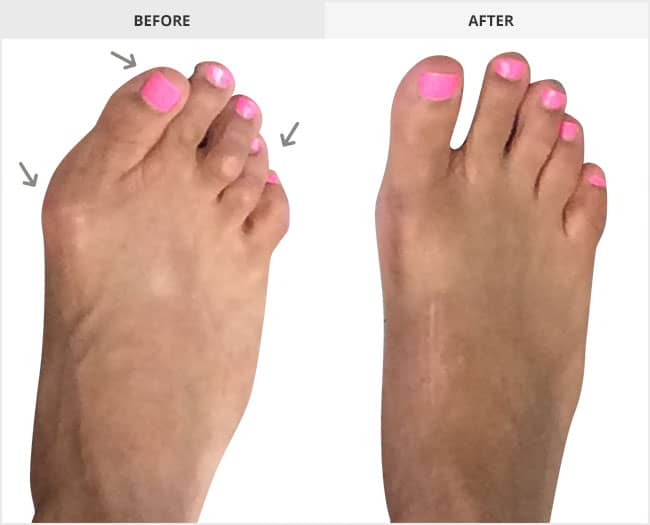What you need to know about Bunion Surgery Procedure
Contents
- 1 What you need to know about Bunion Surgery Procedure
- 2 What Does the Procedure Involve?
- 3 How Long Should You Stay in the Area?
- 4 How Long is the Recovery Time?
- 5 What Aftercare Should You Consider?
- 6 What is the Success Rate for Bunion Surgery Procedure?
- 7 Are there Alternatives to Bunion Surgery Procedure?
- 8 What Should You Expect Before and After the Procedure?
A bunion is a bony bump that occurs when some of the bones in the front part of your foot move out of place and causes your big toe to point laterally towards your little toe. A bunion is a foot deformity that can be painful. When nonsurgical treatment methods cannot relieve the pain and the problem restricts you from carrying out everyday activities, your doctor may recommend for you to undergo bunion surgery (also known as a bunionectomy, bunion removal, or hallux valgus correction) to correct the deformed area.
What Does the Procedure Involve?
Bunion surgery can be performed under local anesthetic, but you may also request a general anesthetic. During the surgery, your surgeon straightens the bone behind the big toe by cutting the ligaments at the joint. If your bunion is severe, the surgeon may need to have the bone cut by performing a technique called osteotomy.

How Long Should You Stay in the Area?
You may leave the hospital on the same day as the procedure, but you need to stay in the local area for 2 weeks. During your stay, you will attend follow-up hospital checkups to monitor your healing as well as for the removal of stitches.
How Long is the Recovery Time?
The full recovery period can take around four to six months. However, you should be able to return to work and some light activities within six to eight weeks. You may also drive after two weeks if necessary.
What Aftercare Should You Consider?
During the first couple of weeks, you will need to wear a cast or surgical boot to protect your foot and you make sure you do not get your stitches wet. Your surgeon will likely send you to physical therapy so you can learn exercises to strengthen your foot and lower leg. Since your foot will remain swollen to some degree for a few months, try to wear shoes with ample room to minimize the pain.
What is the Success Rate for Bunion Surgery Procedure?
Bunion surgery is known to be highly successful with almost 95% of patients indicating they would recommend it to other people. However, just like any surgery, there is the risk of some side effects and complications, such as recurrence of the bunion; the surgery overcorrects the bunion so your toe points inward.
Are there Alternatives to Bunion Surgery Procedure?
Bunion surgery should only be performed when it is severe. If you do not want to undergo this procedure, you can opt for the alternatives, including taking over-the-counter medications (acetaminophen, ibuprofen, or naproxen sodium), changing your shoes, using nonmedicated bunion pads, applying ice to your bunion, and using shoe inserts to help distribute the pressure evenly.
What Should You Expect Before and After the Procedure?
A severe bunion can cause discomfort, pain, and limit your mobility. After bunion surgery, you will be able to complete your everyday routines.
For an in-depth analysis of a Bunion Surgery Procedure, watch this short video.
To check prices or to book a Bunion Surgery Procedure in Thailand or anywhere else in the world, head on over to MyMediTravel now!

